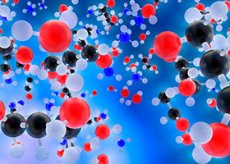Medical expert of the article
New publications
Whether chemicals affect a pregnant woman and her fetus if her work involves these substances
Last reviewed: 08.07.2025

All iLive content is medically reviewed or fact checked to ensure as much factual accuracy as possible.
We have strict sourcing guidelines and only link to reputable media sites, academic research institutions and, whenever possible, medically peer reviewed studies. Note that the numbers in parentheses ([1], [2], etc.) are clickable links to these studies.
If you feel that any of our content is inaccurate, out-of-date, or otherwise questionable, please select it and press Ctrl + Enter.

Research conducted by various specialists - obstetricians-gynecologists, teratologists, embryopharmacologists, physiologists and many others, indicate that chemicals can indeed affect the fetus, causing the development of embryopathies. Embryopathy is a congenital anomaly that occurs in the first three months of pregnancy. (In addition to embryopathies, there are also fetopathies. These are anomalies that occur in the fetus after the third month of pregnancy). The causes of embryopathies can be:
- viral infections (rubella, cytomegalovirus, herpes, etc.);
- exposure to chemicals;
- drug effects;
- exposure to radiant energy;
- hormonal disorders in the mother (diabetes mellitus, thyrotoxicosis, myxedema);
- the effects of alcohol and drugs.
There are four critical periods of fetal development: preimplantation, implantation, organogenesis and placentation, and the fetal period.
Thus, there are several critical periods during which external pathological impact on the fetus can lead to its death. The first critical period is the 7-8th day after fertilization. Of course, you may not feel this period. If at this time external impact killed the fetus, then you may not have any special health problems. Well, perhaps your period may come a little earlier or a little later and be more abundant than usual.
The second critical period begins in the third week of intrauterine development and lasts until the sixth week. The laying of various organs during this period does not occur at the same time, so deformities can occur in isolation in different organ systems, especially if the external influence on the woman is inconsistent.
The fourth stage of embryonic development is called fetal, or fetal, and it continues until the 40th week of pregnancy. During this period, deformities almost never occur. The only exception is anomalies in the development of the genitals in female fetuses if their mothers take hormonal drugs with androgenic action (male hormones). This can lead to the development of false male hermaphroditism.
To date, more than 700 chemical compounds have been described in the literature that can negatively affect the developing embryo, since they are able to penetrate from the woman’s body through the uteroplacental barrier.
Gasoline. Its vapors, having entered the woman's body, penetrate the tissues of the uterus, reducing its contractile activity. They can also disrupt the menstrual cycle. But most importantly, they have a direct toxic effect on the fetus.
Women who are chronically poisoned by gasoline vapors often experience spontaneous miscarriages, premature births, and stillbirths. And children experience severe developmental abnormalities. Analysis has shown that gasoline penetrates many fetal tissues, and its highest concentration was found in the brain tissue of newborns.
No less dangerous are phenols, which, penetrating the woman's body, inhibit the attachment of the fertilized egg in the uterus. In laboratory animals, phenols caused the birth of non-viable offspring, or babies with eye anomalies and other deformities, such as slow ossification of the skeleton.
During the production of synthetic rubber, a large number of different compounds are released into the air. One of them is styrene. It leads to the development of malnutrition in children whose mothers worked in rubber production plants. They have significantly more allergies and colds than usual.
Carbon disulfide used in the viscose industry, even if its content in the air does not exceed the maximum permissible concentrations, enters the female body, and from there, through the placenta, into the tissues of the embryo. This substance is capable of causing intrauterine death of the fetus.
The same picture is observed in women working in industries where the maximum permissible concentrations of manganese are higher than the norm.
Antimony and mercury disrupt reproductive function in women, leading to an increase in the number of spontaneous abortions, premature births, and the birth of weakened children.
Women who work with lead experience infertility, spontaneous abortions, stillbirths. And even if children are born alive, the mortality rate among them is very high.
If we generalize all this information, we can say that when chemicals affect the body of women (even if the norms and maximum permissible concentrations of the substance are observed), most of them experience some kind of violation of the reproductive function. But deformities in children are not very common. Apparently, deformities occur when the maximum permissible concentration of a chemical substance is many times higher than the norm. In addition, it is of great importance in which of the periods of embryonic development this exposure took place.


 [
[